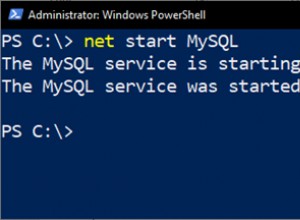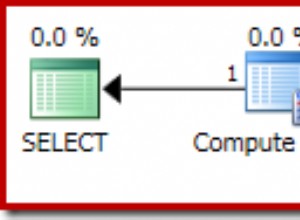Es gibt wahrscheinlich Gründe, analytische Funktionen nicht zu verwenden, sondern analytische Funktionen alleine zu verwenden :
select am, rf, rfm, rownum_rf2, rownum_rfm
from
(
-- the 3nd level takes the subproduct ranks, and for each equally ranked
-- subproduct, it produces the product ranking
select am, rf, rfm, rownum_rfm,
row_number() over (partition by rownum_rfm order by rownum_rf) rownum_rf2
from
(
-- the 2nd level ranks (without ties) the products within
-- categories, and subproducts within products simultaneosly
select am, rf, rfm,
row_number() over (partition by am order by count_rf desc) rownum_rf,
row_number() over (partition by am, rf order by count_rfm desc) rownum_rfm
from
(
-- inner most query counts the records by subproduct
-- using regular group-by. at the same time, it uses
-- the analytical sum() over to get the counts by product
select tg.am, ttc.rf, ttc.rfm,
count(*) count_rfm,
sum(count(*)) over (partition by tg.am, ttc.rf) count_rf
from tg inner join ttc on tg.value = ttc.value
group by tg.am, ttc.rf, ttc.rfm
) X
) Y
-- at level 3, we drop all but the top 5 subproducts per product
where rownum_rfm <= 5 -- top 5 subproducts
) Z
-- the filter on the final query retains only the top 10 products
where rownum_rf2 <= 10 -- top 10 products
order by am, rownum_rf2, rownum_rfm;
Ich habe Rownum anstelle von Rang verwendet, damit Sie niemals Unentschieden bekommen, oder mit anderen Worten, Unentschieden werden zufällig entschieden. Dies funktioniert auch nicht, wenn die Daten nicht dicht genug sind (weniger als 5 Unterprodukte in einem der Top-10-Produkte - es können stattdessen Unterprodukte von einigen anderen Produkten angezeigt werden). Aber wenn die Daten dicht sind (große etablierte Datenbank), sollte die Abfrage gut funktionieren.
Das Folgende macht zwei Durchgänge der Daten, gibt aber in jedem Fall korrekte Ergebnisse zurück. Auch dies ist eine Rang-ohne-Krawatten-Abfrage.
select am, rf, rfm, count_rf, count_rfm, rownum_rf, rownum_rfm
from
(
-- next join the top 10 products to the data again to get
-- the subproduct counts
select tg.am, tg.rf, ttc.rfm, tg.count_rf, tg.rownum_rf, count(*) count_rfm,
ROW_NUMBER() over (partition by tg.am, tg.rf order by 1 desc) rownum_rfm
from (
-- first rank all the products
select tg.am, tg.value, ttc.rf, count(*) count_rf,
ROW_NUMBER() over (order by 1 desc) rownum_rf
from tg
inner join ttc on tg.value = ttc.value
group by tg.am, tg.value, ttc.rf
order by count_rf desc
) tg
inner join ttc on tg.value = ttc.value and tg.rf = ttc.rf
-- filter the inner query for the top 10 products only
where rownum_rf <= 10
group by tg.am, tg.rf, ttc.rfm, tg.count_rf, tg.rownum_rf
) X
-- filter where the subproduct rank is in top 5
where rownum_rfm <= 5
order by am, rownum_rf, rownum_rfm;
Spalten:
count_rf : count of sales by product
count_rfm : count of sales by subproduct
rownum_rf : product rank within category (rownumber - without ties)
rownum_rfm : subproduct rank within product (without ties)




